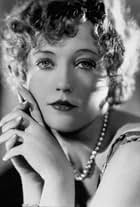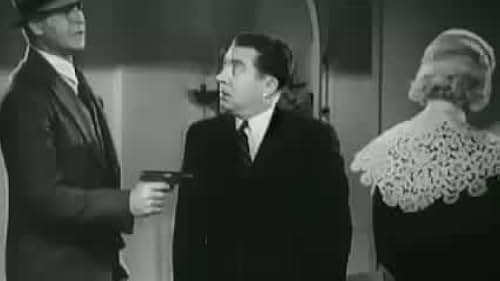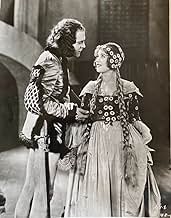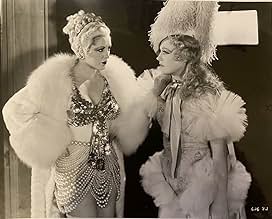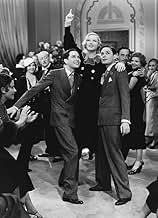Marion Davies(1897-1961)
- Actress
- Producer
- Writer
Marion Davies was one of the great comedic actresses of the silent era and into the 1930s.
Marion Cecelia Douras was born in the borough of Brooklyn, New York on January 3, 1897, the daughter of Rose (Reilly) and Bernard J. Douras, a lawyer and judge. Her parents were both of Irish descent. Marion had been bitten by the show biz bug early as she watched her sisters perform in local stage productions. She wanted to do the same. As Marion got older, she tried out for various school plays and did fairly well. Once her formal education had ended, Marion began her career as a chorus girl in New York City, first in the pony follies, and eventually found herself in the famed Ziegfeld Follies. But she wanted to do more than dance. Acting, to Marion, was the epitome of show business and aimed her sights in that direction. Her stage name came when she and her family passed the Davies Insurance Building. One of her sisters called out "Davies!!! That shall be my stage name", and the whole family took on that name.
Her first film was Runaway Romany (1917), when she was 20. Written by Marion and directed by her brother-in-law, the film wasn't exactly a box-office smash, but for Marion, it was a start and a stepping stone to bigger things. The following year Marion starred in two films, The Burden of Proof (1918) and Cecilia of the Pink Roses (1918). The latter film was backed by newspaper magnate, William Randolph Hearst. When Marion moved to California, she already was involved with Hearst. They lived together at his San Simeon castle, an extremely elaborate mansion which stands as a California landmark to this day. At San Simeon, they threw grand parties, many of them in costume. Frequent guests included Carole Lombard, Mary Pickford, Sonja Henie, and Dolores Del Río - basically all the top names in Hollywood and other celebrities including the mayor of New York City, President Calvin Coolidge, and Charles Lindbergh. Davies and Hearst would continue a long-term romantic relationship for the next 30 years. Because of Hearst's newspaper empire, Marion would be promoted as no actress before her.
She appeared in numerous films over the next few years, with The Cinema Murder (1919) being one of the most suspenseful. In 1922, Marion appeared as Mary Tudor in the historical romantic epic, When Knighthood Was in Flower (1922). It was a film into which Hearst poured in millions of dollars as a showcase for her. Although Marion didn't normally appear in period pieces, she turned in a wonderful performance, and the film turned a profit. Marion remained busy, one of the staples in movie houses around the country. At the end of the twenties, it was obvious that sound films were about to replace silents. Marion was nervous because she had a stutter when she became excited and worried she wouldn't make a successful transition to the new medium, but she was a true professional who had no problem with the change. Time after time, film after film, Marion turned in masterful performances. In 1930, two of her better films were Not So Dumb (1930) and The Florodora Girl (1930). By the early 1930s, Marion had lost her box office appeal and the downward slide began.
Had she been without Hearst's backing, she possibly could have been more successful. He was more of a hindrance than a help. Hearst had tried to push MGM executives to hire Marion for the role of Elizabeth Barrett in The Barretts of Wimpole Street (1934). Louis B. Mayer had other ideas and hired producer Irving Thalberg's wife, Norma Shearer instead. Hearst reacted by pulling his newspaper support for MGM without much impact. By the late 1930s Hearst was suffering financial reversals and it was Marion who bailed him out by selling $1 million of her jewelry. Without her, the Hearst Corporation might not be where it is today. Hearst's financial problems also spelled an end to her career. Although she had made the transition to sound, other stars fared better, and her roles became fewer and further between. In 1937, a 40-year-old Marion filmed her last movie, Ever Since Eve (1937). Out of films and with the intense pressures of her relationship with Hearst, Davies turned more and more to alcohol. Despite those problems, Marion was a very sharp and savvy business woman.
When Hearst died in 1951, Marion did not really know what was going on. The night before, there had been a lot of people in the house. Marion was very upset by the large crowd of family and friends. She said it was too noisy, and they were disturbing Hearst by talking so loud. She was upset and had to be sedated. When she woke, her niece, Patricia Van Cleve Lake, and her husband, Arthur Lake, told her that Hearst was dead. Upon Patricia's death, it was revealed she had been the love child of Davies and Hearst. Marion was banned from Hearst's funeral.
She later started many charities including a children's clinic that is still operating today. She was very generous and was loved by everyone who knew her. She went through a lot, even getting polio in the 1940s. Marion married for the first time at the age of 54, to Horace Brown. The union would last until she died of cancer on September 22, 1961 in Los Angeles, California. She was 64 years old.
Marion Cecelia Douras was born in the borough of Brooklyn, New York on January 3, 1897, the daughter of Rose (Reilly) and Bernard J. Douras, a lawyer and judge. Her parents were both of Irish descent. Marion had been bitten by the show biz bug early as she watched her sisters perform in local stage productions. She wanted to do the same. As Marion got older, she tried out for various school plays and did fairly well. Once her formal education had ended, Marion began her career as a chorus girl in New York City, first in the pony follies, and eventually found herself in the famed Ziegfeld Follies. But she wanted to do more than dance. Acting, to Marion, was the epitome of show business and aimed her sights in that direction. Her stage name came when she and her family passed the Davies Insurance Building. One of her sisters called out "Davies!!! That shall be my stage name", and the whole family took on that name.
Her first film was Runaway Romany (1917), when she was 20. Written by Marion and directed by her brother-in-law, the film wasn't exactly a box-office smash, but for Marion, it was a start and a stepping stone to bigger things. The following year Marion starred in two films, The Burden of Proof (1918) and Cecilia of the Pink Roses (1918). The latter film was backed by newspaper magnate, William Randolph Hearst. When Marion moved to California, she already was involved with Hearst. They lived together at his San Simeon castle, an extremely elaborate mansion which stands as a California landmark to this day. At San Simeon, they threw grand parties, many of them in costume. Frequent guests included Carole Lombard, Mary Pickford, Sonja Henie, and Dolores Del Río - basically all the top names in Hollywood and other celebrities including the mayor of New York City, President Calvin Coolidge, and Charles Lindbergh. Davies and Hearst would continue a long-term romantic relationship for the next 30 years. Because of Hearst's newspaper empire, Marion would be promoted as no actress before her.
She appeared in numerous films over the next few years, with The Cinema Murder (1919) being one of the most suspenseful. In 1922, Marion appeared as Mary Tudor in the historical romantic epic, When Knighthood Was in Flower (1922). It was a film into which Hearst poured in millions of dollars as a showcase for her. Although Marion didn't normally appear in period pieces, she turned in a wonderful performance, and the film turned a profit. Marion remained busy, one of the staples in movie houses around the country. At the end of the twenties, it was obvious that sound films were about to replace silents. Marion was nervous because she had a stutter when she became excited and worried she wouldn't make a successful transition to the new medium, but she was a true professional who had no problem with the change. Time after time, film after film, Marion turned in masterful performances. In 1930, two of her better films were Not So Dumb (1930) and The Florodora Girl (1930). By the early 1930s, Marion had lost her box office appeal and the downward slide began.
Had she been without Hearst's backing, she possibly could have been more successful. He was more of a hindrance than a help. Hearst had tried to push MGM executives to hire Marion for the role of Elizabeth Barrett in The Barretts of Wimpole Street (1934). Louis B. Mayer had other ideas and hired producer Irving Thalberg's wife, Norma Shearer instead. Hearst reacted by pulling his newspaper support for MGM without much impact. By the late 1930s Hearst was suffering financial reversals and it was Marion who bailed him out by selling $1 million of her jewelry. Without her, the Hearst Corporation might not be where it is today. Hearst's financial problems also spelled an end to her career. Although she had made the transition to sound, other stars fared better, and her roles became fewer and further between. In 1937, a 40-year-old Marion filmed her last movie, Ever Since Eve (1937). Out of films and with the intense pressures of her relationship with Hearst, Davies turned more and more to alcohol. Despite those problems, Marion was a very sharp and savvy business woman.
When Hearst died in 1951, Marion did not really know what was going on. The night before, there had been a lot of people in the house. Marion was very upset by the large crowd of family and friends. She said it was too noisy, and they were disturbing Hearst by talking so loud. She was upset and had to be sedated. When she woke, her niece, Patricia Van Cleve Lake, and her husband, Arthur Lake, told her that Hearst was dead. Upon Patricia's death, it was revealed she had been the love child of Davies and Hearst. Marion was banned from Hearst's funeral.
She later started many charities including a children's clinic that is still operating today. She was very generous and was loved by everyone who knew her. She went through a lot, even getting polio in the 1940s. Marion married for the first time at the age of 54, to Horace Brown. The union would last until she died of cancer on September 22, 1961 in Los Angeles, California. She was 64 years old.
